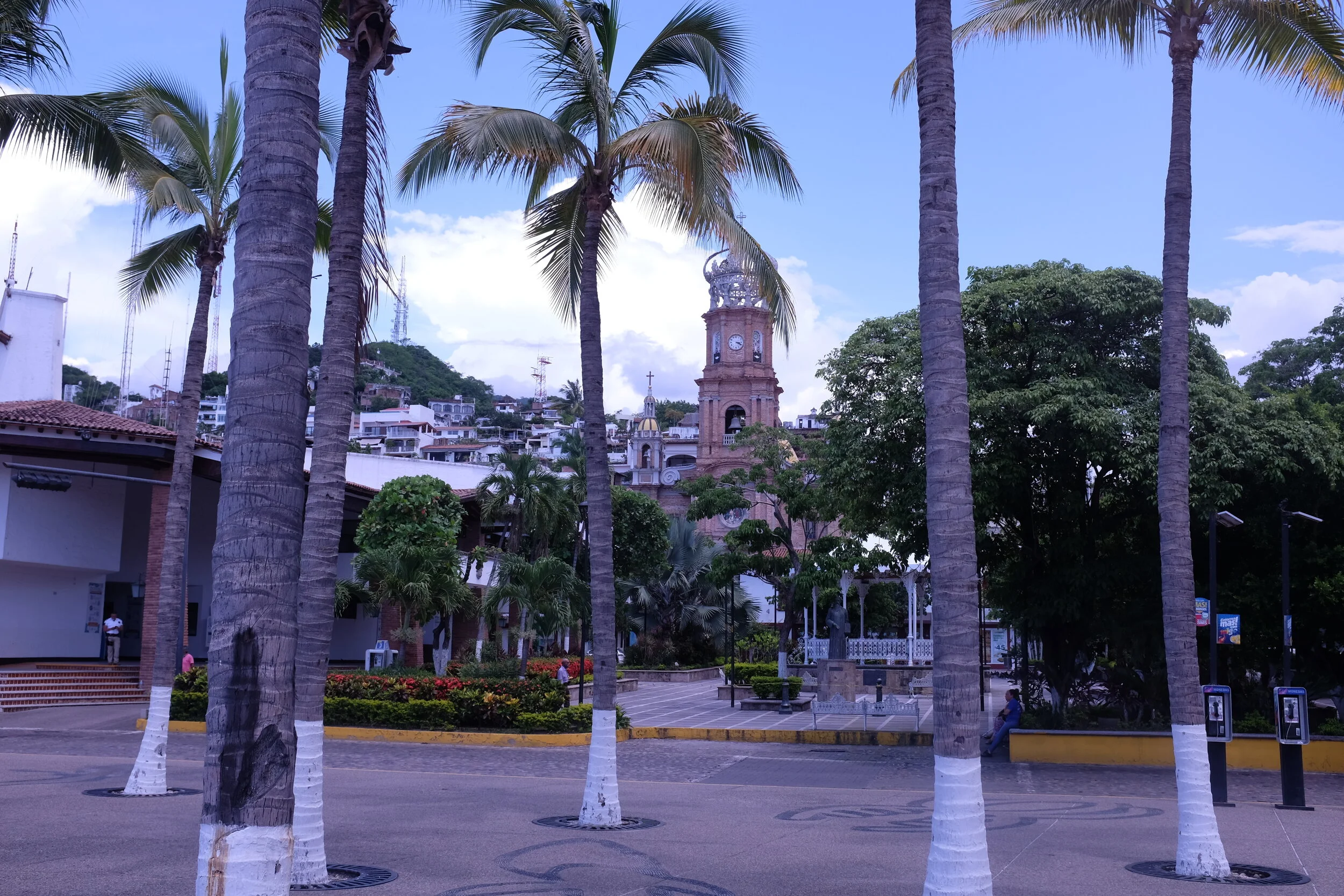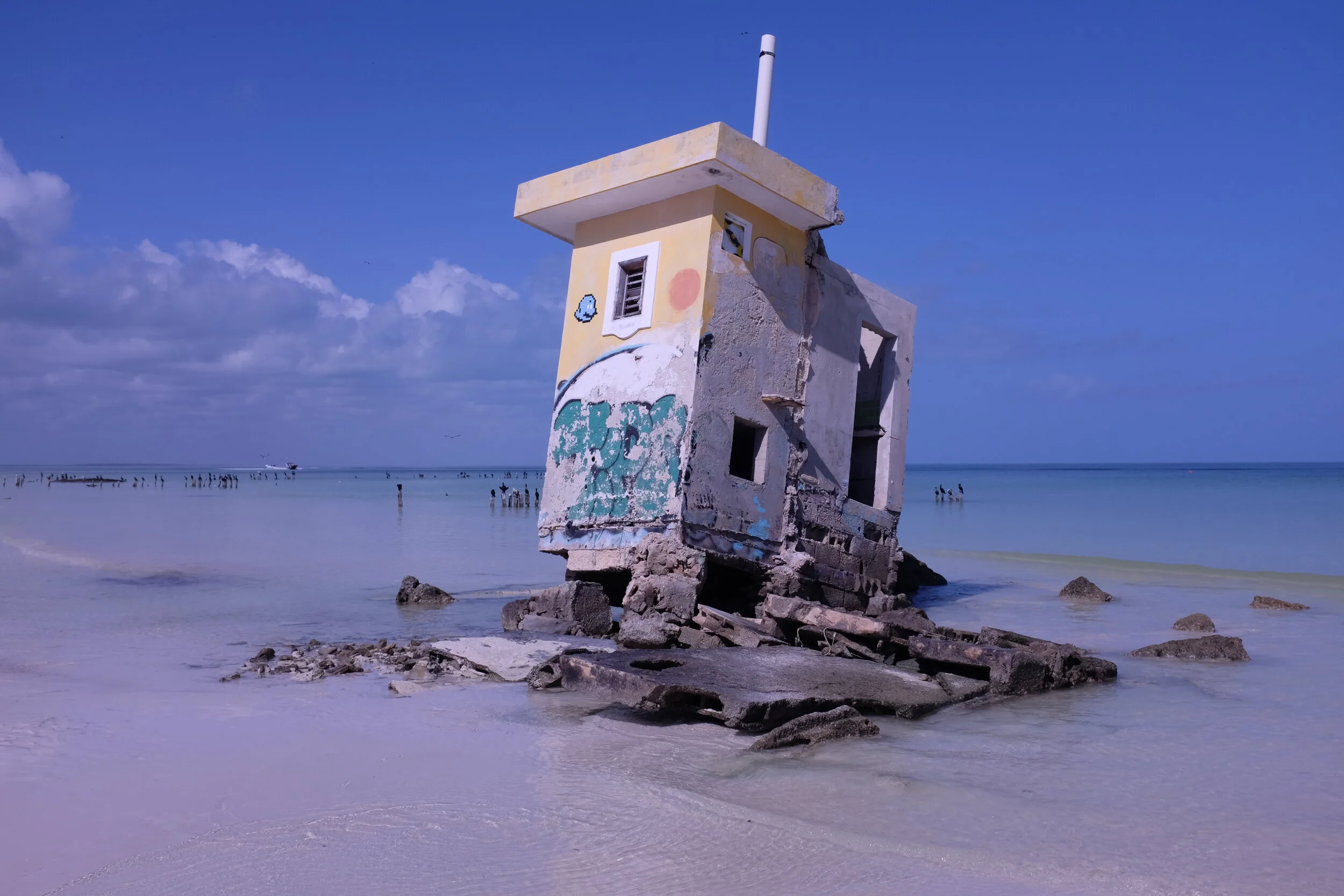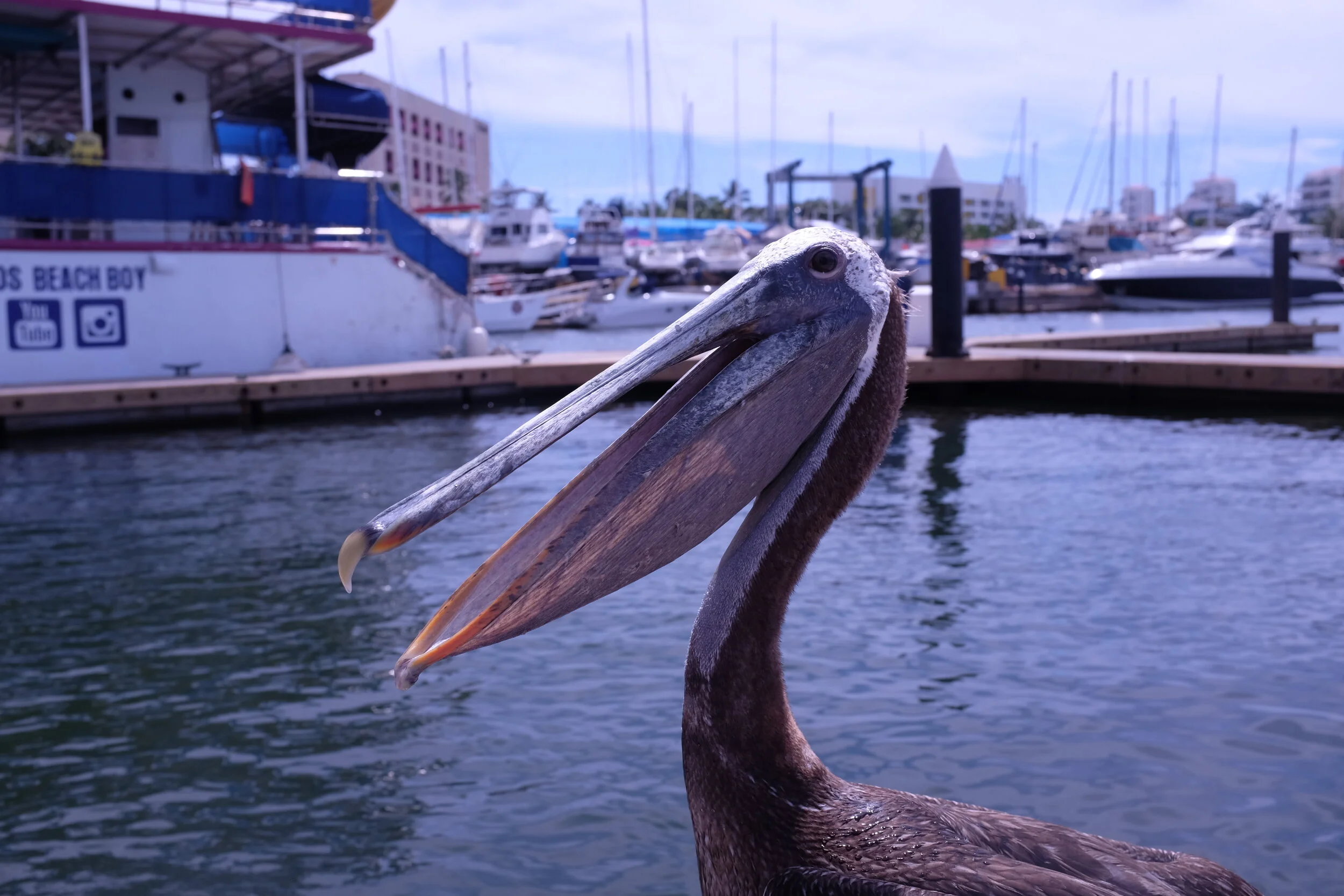Part 2: The Beautiful People
Puerto Vallarta is a stunning, Pacific colonial town, carved into the mountain jungle above white sand beaches. A retirement home for Californians and a vibrant LGBTQ+ haven, the people here are as beautiful as the cobbled streets and stucco buildings which frame them. The town was made famous in the mid-fifties when, having shot a movie in this idyllic local, Elizabeth Taylor and Richard Burton bought neighbouring homes here. A fact we noted by visiting the properties, now a hotel/restaurant, and getting Liz Taylor drunk on fine wines.
There are party super stores everywhere in Puerto Vallarta. On every street corner, in every neighbourhood, they are as ubiquitous as Tescos. Piñatas, party poppers, balloons, confetti and streamers are household essentials. Mexico is a culture that says, ‘let’s celebrate’. You did your laundry? Okay, let’s open a bottle! The mail arrived this morning? Great! I have a postman piñata right here! Your boyfriend left you? That’s terrific! Let’s light some candles and put on some music! For those of us just off the boat, it’s quite bizarre. “We don’t do this in old country. In old country, we resent celebration. In old country, nothing makes us madder than a cake at work or some stupid card we have to sign. Sometimes they even make us go for drinks. Can you imagine our fear and loathing?”
Music is a permanent. There are three types here, reggaeton, traditional mariachi and banda, and western pop hits from 1983-1997. Restaurants, taxis and taquerias, there is no variation on these three. I can take the reggaeton. I actively like the traditional, especially the banda. This is big brass band and percussion music. It’s oompah with a suntan. A banda band comes down the beach every day for about beer o’clock and the whole shoreline starts moving. It’s a traditional style but it’s very much pop music here. Annemarie described it succinctly as ‘Chas & Dave for Mexico’. But the late ‘80/early ‘90s power ballads? No. I’m sorry Mexico, I was with you right up until Michael Bolton. Then again, if it makes Annemarie stand up on the breakfast table and start belting out Glen Madeiros for the rest of the hotel, I guess I’m happy.
The only thing about Puerto Vallarta that’s annoying is that it’s such a cool town, but we don’t know where. It’s crowded with art galleries, chic clothes stores, cool restaurants and bars but we can’t find the people. We’ve beach-hopped up and down the coast, we’ve eaten in all the recommended restaurantes but we can’t find them. We know they’re here. We pass them in the street. Hip young couples, beautifully sculpted gay men, earthy retired Californian hippies, arty young women right out of a Daria cartoon, but when we try and find their beach or their bar, we can’t. We’re on Playa de las turistas. We’re eating at Taverna Youaintfromhere and it’s driving me nuts.
We’ve come across this phenomenon before, of course. On our honeymoon in Hawaii, we stayed in Hana, a remote town on the far side of Maui, and we couldn’t get off the tourist trail. Eventually we asked a waiter, “There are places here, aren’t there? Better places. Cool places where you and you friends drink, right?”
“Yeah. That’s right.” He replied, stony faced. He then walked away without a word. Good on him. Why should their share it with us? They’ve given so much of their town over to tourism and they’re not giving up what little they have left. I totally understand that.
But we’re not like them, I want to tell them, You can tell us. We’re okay. We live in Mexico… even if it only has been for a couple of weeks.
One night we nearly had a break though. We found a place. A little restaurant advertised for its local, seasonal cuisine. We walked in and there they were! People! Real people! A table of beautiful gay men here, a mesa of artists there, a group of left-wing, West Coast intellectual lesbians over there. This last one Annemarie tried to get me to talk to.
“Go on,” she says, “Ask them! Ask them where the secret beaches are!”
Because what every group like that wants is a chubby, English, white man waddling over, “Hi Lesbians! Say, where do you guys sunbathe?”
Naturally, the first thing we’re told by the all-female owners, “We close, forever, tomorrow night.” Damn. So close. Everyone in the restaurant is treated like an old friend apart from us. They get socially distanced hugs and long chats. We get our food, exceptional as it was, thrown in front of us. Our table squeezed between the till and the toilet. Service with a scowl.
“We have to come back here tomorrow,” I tell Annemarie. “I promise you, they’ll remember us, be lovely and give up the goods.”
We did. And as predicted we were taken in by the same surly wait staff as long-lost children. We got the inside gossip on not just beaches but restaurants, bars and even a whole neighbourhood we didn’t know existed. We had a week left to ingrain ourselves… we didn’t quite manage it. We went to the cool neighbourhood, the one not even on the tourist maps. We ate in the good restaurants, where the portions were ‘human’, rather than ‘American’ sized and came with actual spice and flavour, two elements removed from most of the fare we’d been eating up until then (though we still had to ask for the real salsa. Apparently, Gringos don’t do spice. That’s okay though because when you do ask for something with more heat than a glass of milk, a little life returns behind the eyes of the servers).
The “inside” beaches, well, we tried but we’d actually carved out quite a happy hole next the banda band. We took a few road and water taxis to other beaches and though they were beautiful, creatures of comfort that we are, we preferred the one that had beer within walking distance. As it turns out, the beautiful people don’t use the beaches anyway. They own penthouses in town with pools, or mansions in the mountains with pools, or ocean facing condos with pools. Culturally chlorinated on the waterfront.
As for bars, the closest we got was la palapa by the water. You can’t listen to basa music without a cerveza. The bars in town we avoided because of the perennial black cloud of Covid and we weren’t the only ones. Puerto Vallarta was a ghost town. As we sat on Elizabeth Taylor’s terrace and the sun went down, we noticed something strange in the mountain town offered by up Liz’s view. No lights came on. Hundreds of apartments and villas sat in darkness as the night fell. We asked our waiter. Turns out we’d arrived in the off season. Puerto Vallarta, the tourist part, is a winter town. A Christmas haven for Americans and Canadians who live above the snow line. August, when we were there, is too hot for most of them (a phrase that might as well be in a foreign language for the English) so the town is only ever usually at twenty percent capacity. With Covid, it’s more like five. Five percent with no real sign of recovery in sight. Up until we arrived, it had been on full lock-down for months. Zero percent. It was a sobering moment. We started leaving larger tips, took more tours and ordered extra tequilas at the end of our meals.
Rested and recuperated, Annemarie got the message that she had a start date for the new job. I’d almost forgotten why we’d moved here in the first place. We packed up our bags, took in the breath-taking vistas once more and muttered about returning for Christmas. Why not? We can’t go to the UK and Puerto Vallarta is as far from our new home as Birmingham was to our old (cheaper to get to as well). Imagine all those tropical fish, sea turtles and dolphins with little Santa hats on. Adorable! The wildlife are as friendly as the people in Mexico. I’ve never known it. The fish swim about you, brushing up against your legs, suggestively. The turtles waddle up on crowded beaches, ‘Hey everyone, how’s it going? Some weather we’ve been having, huh?’. Sea birds and squirrels eat out your hand, swarms of butterflies come and check out your tan close up, there is no fear of humanity. Coming from London, where the foxes are frightened of their own shadows and the squirrels would rather run over live electrical cables than come within one hundred foot of you, it’s quite a coup. It’s so nice when everyone is so nice.
So it’s back to the City, for now. Maybe, when tourists start coming back to CDMX, they’ll look at us and think, I wonder where they drink?



